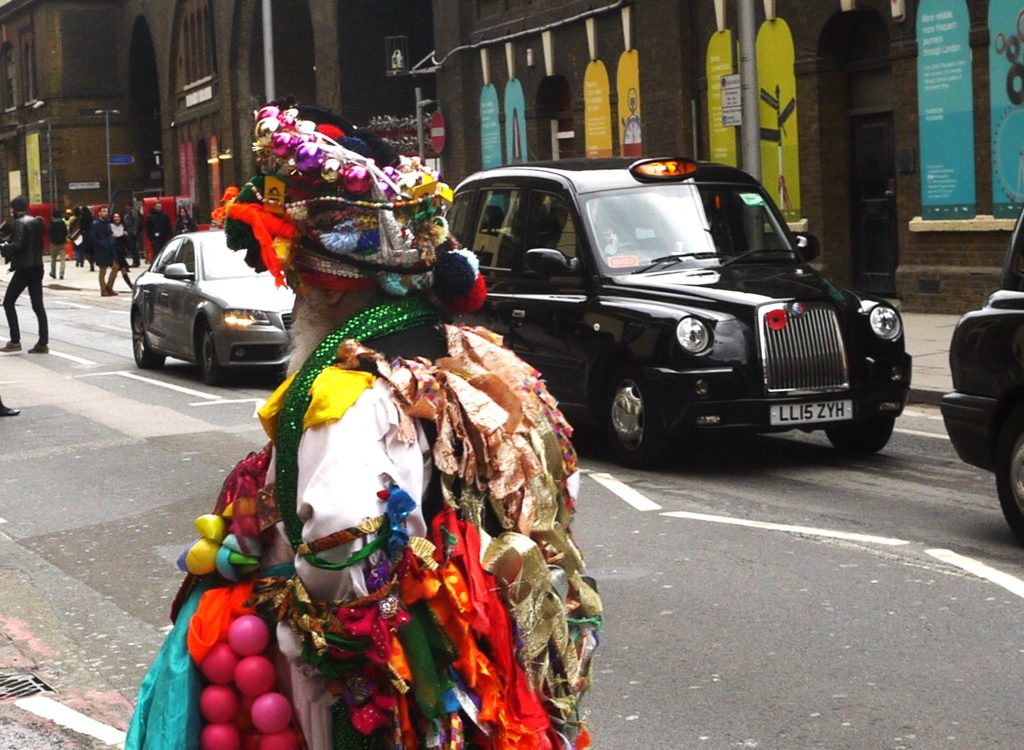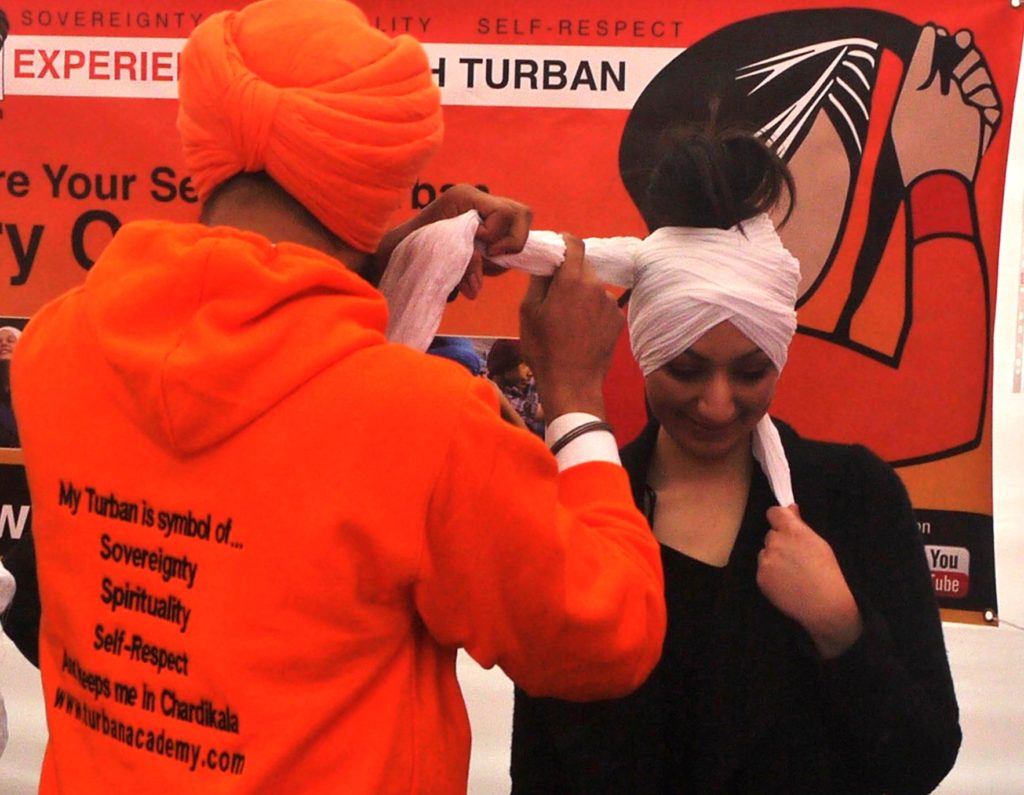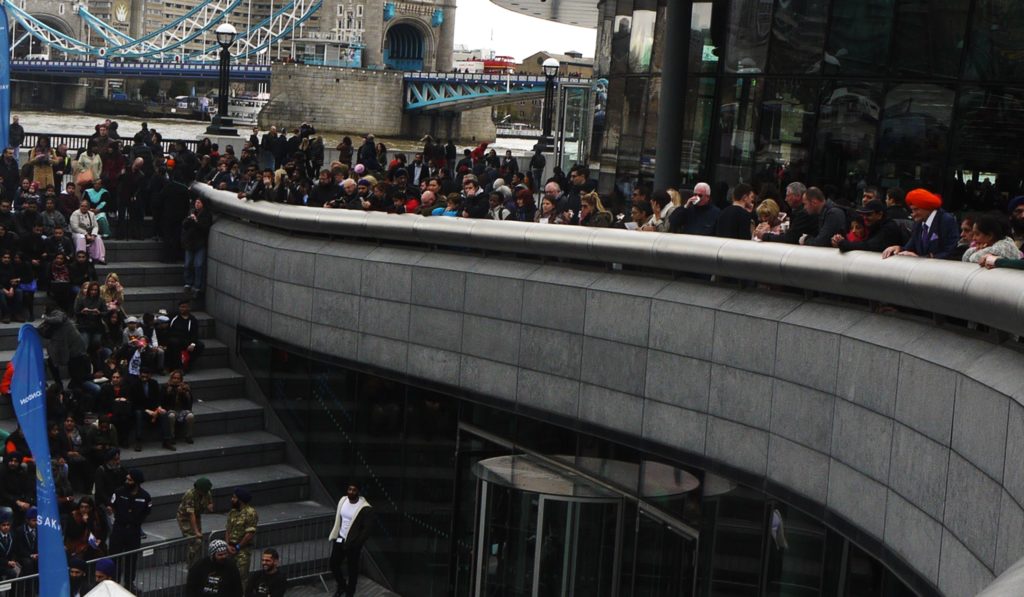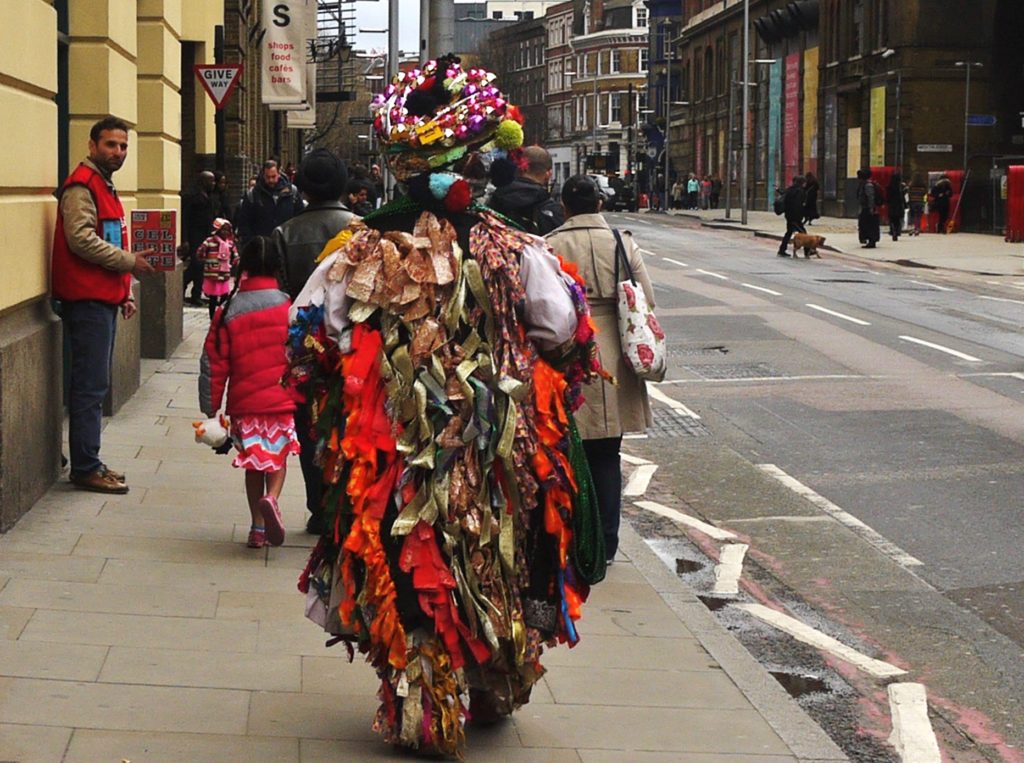Living in a city that’s home to 270 nationalities, I’m constantly amazed by the different cultures that surround me daily. And with such a range of faith festivals, there’s ample opportunity to learn more about those I regularly rub shoulders with on my daily commute. Intrigued by the brightly coloured turbans that grace our city, I decided to spend an afternoon immersed in Sikh traditions at the Vaisakhi Festival at City Hall.

A costumed Sikh man at the Vaisakhi festival in London
The Vaisakhi Festival is traditionally held on the 13th or 14 April to mark the collective birthday of the Khalsa brotherhood which was created by the 10th Guru of the Sikhs, Guru Gobind Singh in 1699. The festival also marks harvest time in the Punjab and is one of the top Sikh festivals along with Maghi and Diwali.

Vaisakhi Festival 2016
City Hall has celebrated the Vaisakhi Festival for the last few years with a vibrant programme of live music, community stalls, folk music, children’s activities and turban tying – all provided free of charge to over 30,000 residents and visitors.
Avoiding the snaking queues into City Hall, I headed straight for the turban tying tent. Traditionally worn to take care of the hair, respect God, and preserve the Sikh identity, the tightly woven cloths have endured since Guru Gobind Singh’s rein in 1699. Designed to preserve the integrity of the hair, (which is never cut), turbans are only taken off to bathe and sleep. While turbans are more commonly worn by men, women also cover their heads either with headscarves or turbans which are frequently co-ordinated with their outfit.

Vaisakhi Festival 2016 at City Hall
While each turban colour has a special significance, most people tend to wear the same colour every day. Gazing at the sea of tangerine around me, I’m informed that orange is particularly popular as it signifies wisdom and courage. But how do you put it on and how do Sikhs keep it looking so neat and tidy?
It’s a skilful art which involves folding, tucking and pleating a mammoth five-metre long cloth into a deft series of tightly woven pleats capable of maintaining control through thick and thin. The operation begins at the back of the head and winds around the head in slow moving contortions before being finally tucked into place on the scalp. Being blessed with wild, curly hair which frequently morphs into uncontrollable frizz – I can definitely see the advantages of having my locks tucked away.

Vaisakhi Festival 2016 at City Hall
Tearing myself away from the turbans, I join the throngs on the scoop for the live folk music. Originating as a musical expression of mystical poetry, classical Sikh music has largely been replaced by contemporary genres which are often based on Indian film music. Jungle-style beats reverberate around the scoop as the air is infused with a restless energy. Tapping along to the beats, I feel privileged to be able to seamlessly slip into the celebrations of another culture right here on my doorstep.

Vaisakhi Festival 2016 at City Hall
As I leave the celebrations a few hours later, I bump into this colourful character just outside London Bridge tube station. In typical London fashion, nobody bats an eyelid as he flounces past in his colourful ensemble.
What’s your favourite faith festival in the UK? Please share your recommendations.
The Vaisakhi Festival 2017: will take place in Trafalgar Square from 12.00-6.00pm.
